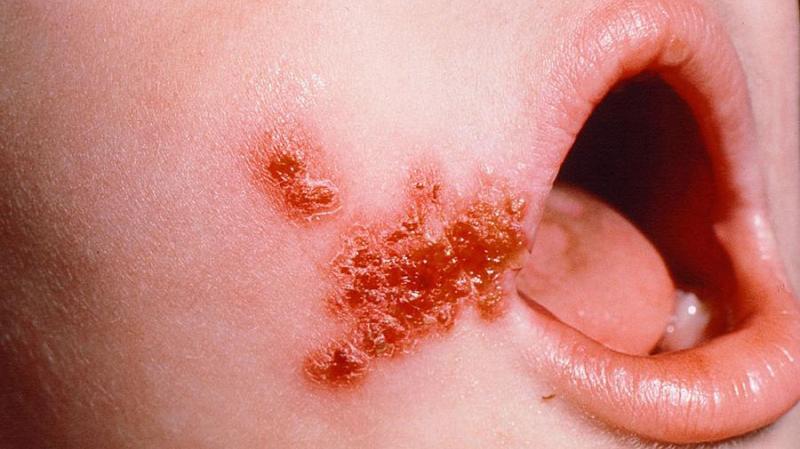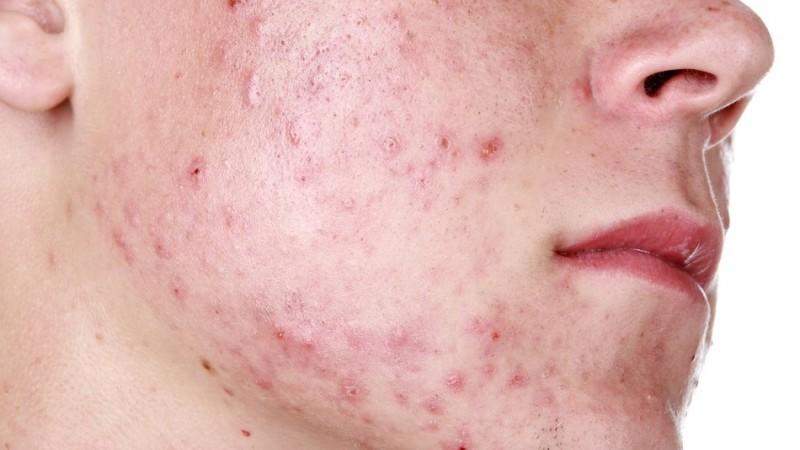Each person from the moment of his birth is surrounded by millions of various microorganisms. Some of them are harmless, even useful, while others, on the contrary, negatively affect the body, for example, such as those that can provoke the development of a number of pathologies. However, other pathogenic bacteria are also known to medicine, among which staphylococcus aureus is also present.
So, what is staphylococcus, what is characteristic of this organism and why is it dangerous for people?
What is staphylococcus? It should be said that a sedentary lifestyle is typical for this gram-positive microorganism.
Staphylococcus aureus(Staphylococcus) has a rounded shape, the diameter of which is 0.6-1.2 mm, belongs to the Staphylococcus family. The main habitat is the mucous tissues and human skin. It can be crushed into several layers, as a result it looks like bunches of grapes (in pure culture), a photo of staphylococcus is presented below.
Staphylococcus aureus
What is this staphylococcus? On a nutrient medium of a dense consistency it has a purple, white, golden or yellow color, and on a liquid medium it has a uniform turbidity. This microorganism is almost always present on the surface of the human body., but with a decrease in the body's defenses, it penetrates inside and begins its detrimental effect on the internal organs and systems of the human body.
With strong and normal immunity, it does not create any special problems.
So what is staphylococcus and why is it dangerous for people? Dangerous because able to produce toxic substances and enzymes that have a pathogenic effect on the cells of the human body and lead to their destruction.
Today medicine knows about 27 subspecies of this pathogenic organism, each of them has different aggressiveness and pathogenetic activity.
Methods of bacterial infection
Staphylococcus aureus are among the most common pathogens. They can live in the oral cavity, on mucous membranes, in the respiratory system, in the gastrointestinal tract, urinary system, in intimate organs. In addition, they are present in the air, on all household items.
Several types of staphylococcus aureus are dangerous for people, in particular:
- Saprophytic.
- epidermal.
- Hemolytic.
- Golden.
Staphylococcal bacilli are transmitted in the following ways:

In addition to direct ways of infection with staphylococcus infection, there are indirect ways of infection:
- Diseases that reduce the human immune system.
- Stress, bad sleep.
- Hypothermia of the body, as a result - the development of inflammatory processes in the upper respiratory tract, which is favorable for staphylococci.
- Diabetes mellitus, endocrine disorders.
- Smoking, alcohol abuse.
- AIDS or HIV infection.
- The presence of a variety of chronic diseases.
- Age. Newborns, preschool children, and the elderly are most exposed to infection.
- The presence of influenza or SARS.
- Prolonged use of vasoconstrictor drops that violate the integrity of the nasal mucosa, thereby facilitating the penetration of bacteria.
- Eating contaminated foods.
- Injuries to the mucous membranes or skin areas.
- Insufficient hygiene.
What diseases does it cause
Saprophytic
Most of all affects the mucous membranes of the urethra, provoking the development of cystitis in women.
epidermal

Staphylococcus photo
It has the ability to take root on any part of the mucous membranes and skin. For a healthy person, it is practically not dangerous, but for patients in intensive care, once inside their body, it provokes blood poisoning (sepsis) and inflammation of the inside of the heart (endocarditis).
Golden
The most dangerous of all types of bacteria, damages all organs, thereby causing the development of more than 100 diseases, including fatal ones, which is also characteristic of.
Staphylococcus aureus is extremely hardy and tenacious, easily resists the protective properties of the body.
It withstands high temperatures, is not afraid of ultraviolet rays, hydrogen peroxide, 100% ethyl alcohol and some drugs with antibacterial capabilities, in addition, it is highly toxic.
Prior to the development of antibiotics, 9 out of 10 infections with Staphylococcus aureus were fatal. The advent of penicillin contributed to the effective fight against this infection. However, Staphylococcus aureus very quickly developed resistance to antibiotics, today this microorganism has good resistance to penicillin.
According to medical statistics about 20% of people are carriers of Staphylococcus aureus. The transfer of the pathogen is carried out from the place of localization of its colonies to the injured area of the skin, or through direct contact with a carrier of staphylococcal infection.
This type of staphylococcus bacterium can lead to the development of serious pathologies:

Especially dangerous are hospital strains of staphylococcal bacilli that circulate in hospitals. They are characterized by increased virulence and stable resistance to antibiotics.
Staphylococcal disease, in most cases, manifests itself in patients with a weak immune system, for example, in pregnant / lactating women, cancer patients, newborns, and in those patients who were forced to undergo long-term antibiotic treatment.
The symptomatic picture, which is characteristic of staphylococcus, is determined by what kind of microorganism provoked the development of the disease, however, there are common features:
- Increased body temperature.
- Hyperemia.
- Swelling of tissues.
- Painful discomfort due to compression of nerve endings by edematous tissues.
- Violation of the functioning of organs and tissues, due to the effect of infection on cells.
To determine the correct diagnosis, it is very important to determine the type of pathogen.
Today, all bacteriological laboratories accurately determine the specific stamp of a microorganism, its degree of susceptibility to antibiotics and other drugs.
Prevention methods
In order to avoid infection with staphylococci, observe the rules of personal hygiene, treat caries, manifestations of conjunctivitis, boils, inflammation of the genitourinary system in a timely manner, strengthen the body, adhere to preventive measures for acute respiratory viral infections and acute respiratory infections.

Acne with Staphylococcus aureus
Do not forget to systematically ventilate the room, do wet cleaning.
During an epidemic of respiratory diseases, avoid crowds, lead an active lifestyle, play sports.
Conclusion
Do not despair if a staphylococcal infection has manifested in your body. Timely access to a doctor, compliance with his recommendations regarding therapy and prevention, will help to quickly and effectively recover from the disease.
In contact with

